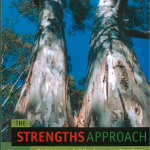Aiming to provide purpose and direction in a complex field of work, this book offers direct and straightforward guidance on how to improve child protection on the frontline.
Terry McCarthy draws directly from his own extensive practice experience to outline three steps to achieve improved outcomes. First, he explains how to establish an effective culture which develops learning on relationships and styles of authority. Second, he identifies how to support social workers to create a stable, skilled and confident workforce, equipped to deal with emotional challenges. Third, he outlines strategies to enable families to change, with useful techniques for working alongside families to make sure the needs of the child are being met. This approach aims to help children to live safely and well within their own families.
This practical guide serves as a guiding compass through the dilemmas and conflicts of child protection practice, and will be valued by frontline social work managers and practitioners alike.
Contents:
- Introduction.
- Terminology.
- 1. Background and Current Environment.
- 1.1. The level of need and risk.
- 1.2. Lessons which have been identified.
- 1.3. Attempts to address these lessons.
- 1.4. The context of safeguarding.
- 1.5. The current environment.
- 1.6. Conclusion: Developing direct effective safeguarding.
- 2. Step One: Establish a Culture which Enables and Leads.
- 2.1. Ensuring that the best interests of children are met.
- 2.2. Developing learning and positive change.
- 2.3. Developing healthy and effective relationships.
- 2.4. Styles of authority. 2.5. Responsibility and accountability.
- 2.6. Clarity of purpose and performance management.
- 2.7. Summary of Step One.
- 3. Step Two: Develop a Stable, Skilled and Confident Workforce
- 3.1. Emotional challenges, dilemmas and conflicts.
- 3.2. Supporting and developing practitioners.
- 3.3. Practitioner capabilities
- 3.4. Manager capability.
- 3.5. Ensuring safety of practitioners.
- 3.6. Developing relationships with partner agencies.
- 3.7. Summary of Step Two.
- 4. Step Three: Enable Families to Change.
- 4.1. Continuous evaluation of risks and solutions.
- 4.2. Effective approaches with families.
- 4.3. Working with children.
- 4.4. Summary of Step Three.
- Appendix A: Checklist for social workers appraisal based on the PCF capabilities.
- Appendix B. Additional skill areas for managers.
- Appendix C. managing incidents of unacceptable behaviour.
- Appendix D. Contents of letters to families to clarify the nature and expectations of involvement. References.
Author Bio:
Terry McCarthy is a qualified social worker with over 30 years’ experience in children’s services. He has held senior management posts and has worked as an independent consultant for social work departments. He now runs Impact for Children Ltd, which provides consultancy and training for local authorities on developing effective safeguarding practice.






